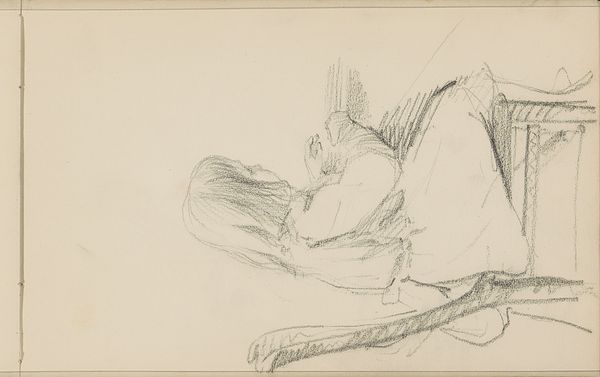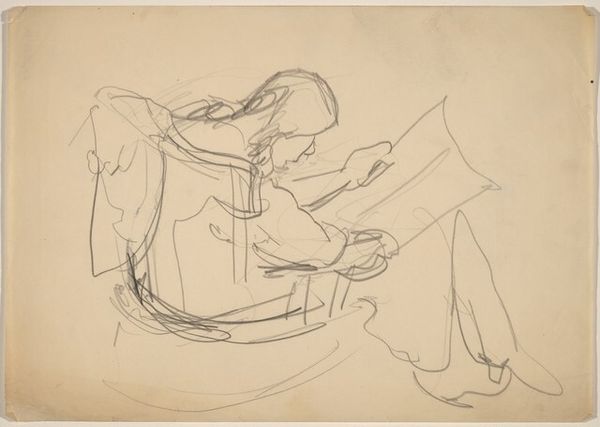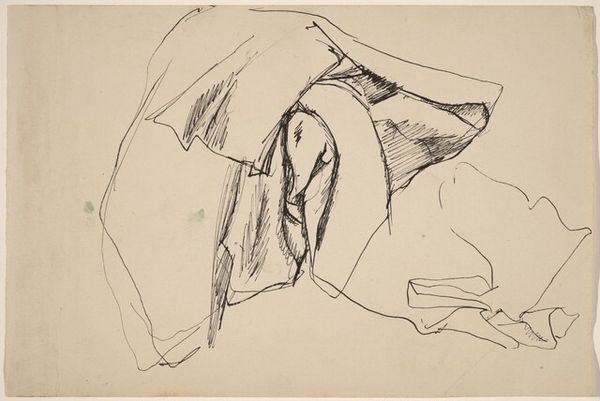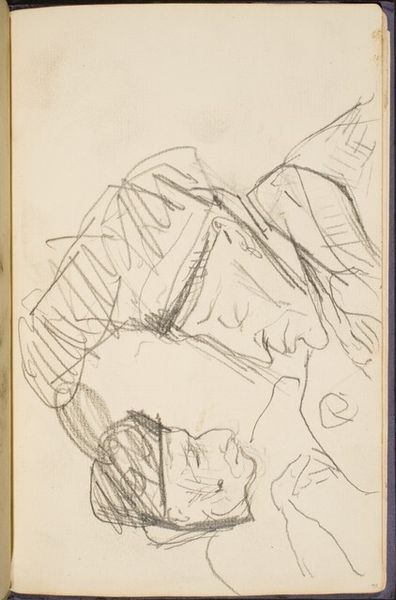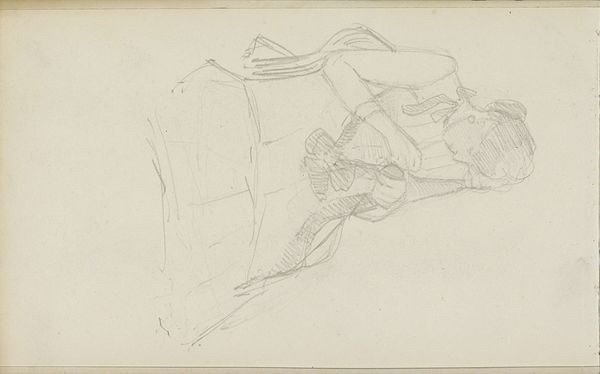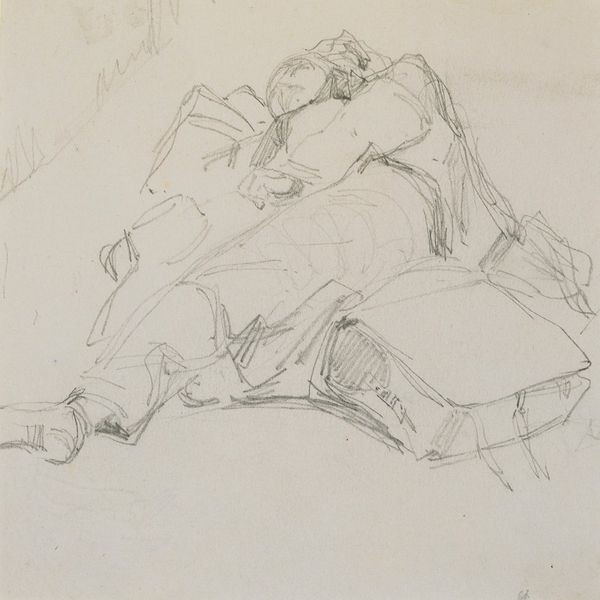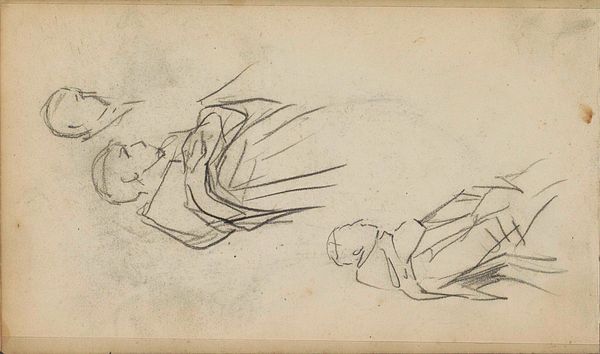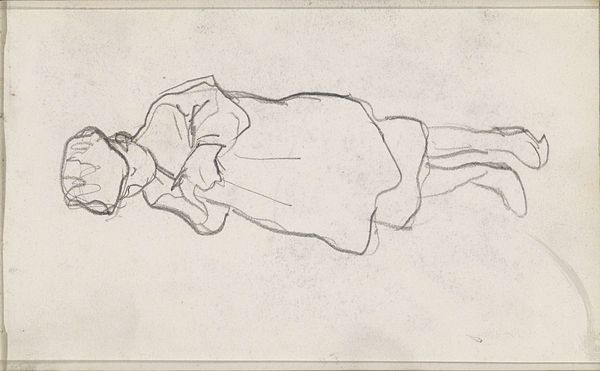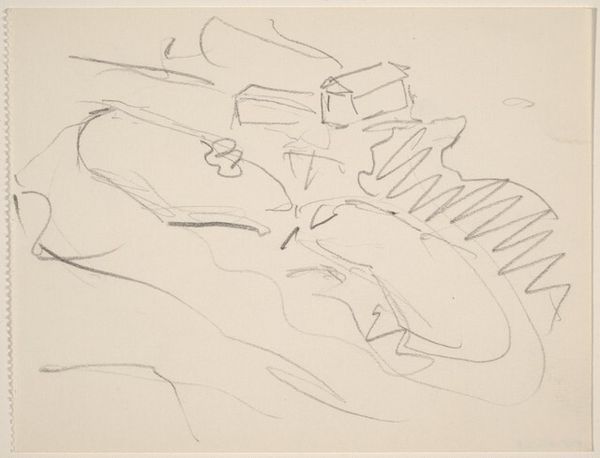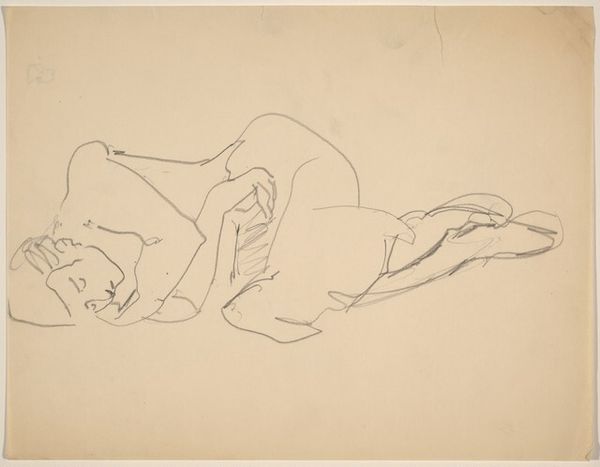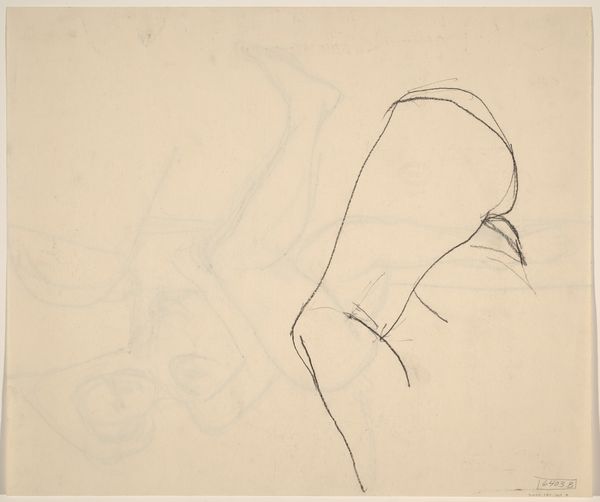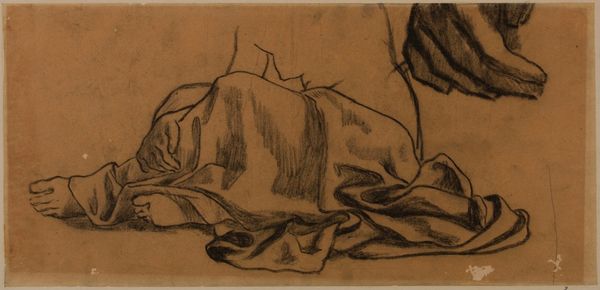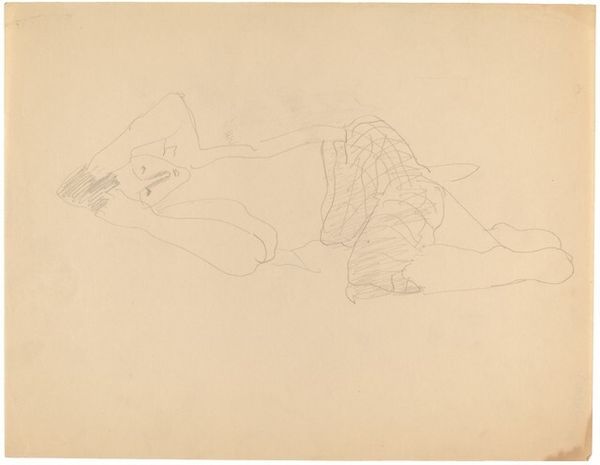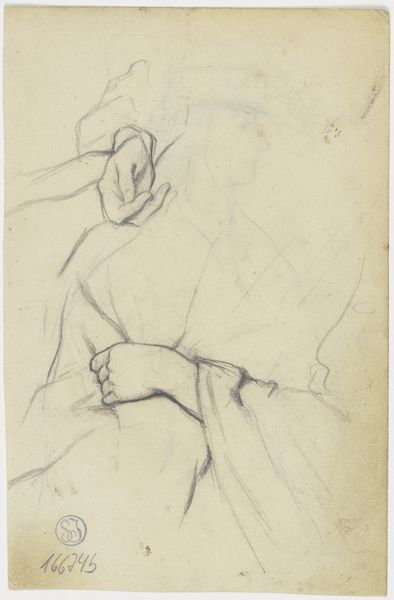![Man Sleeping [recto] by Joseph Stella](/_next/image?url=https%3A%2F%2Fd2w8kbdekdi1gv.cloudfront.net%2FeyJidWNrZXQiOiAiYXJ0ZXJhLWltYWdlcy1idWNrZXQiLCAia2V5IjogImFydHdvcmtzLzFlYzNkNmY1LWUyYjUtNDc3MC1iZjNiLTQ3NDkyZGMyNmQxOS8xZWMzZDZmNS1lMmI1LTQ3NzAtYmYzYi00NzQ5MmRjMjZkMTlfZnVsbC5qcGciLCAiZWRpdHMiOiB7InJlc2l6ZSI6IHsid2lkdGgiOiAxOTIwLCAiaGVpZ2h0IjogMTkyMCwgImZpdCI6ICJpbnNpZGUifX19&w=1920&q=75)
drawing
#
portrait
#
drawing
#
portrait drawing
#
modernism
Dimensions: sheet: 18.1 × 25.4 cm (7 1/8 × 10 in.)
Copyright: National Gallery of Art: CC0 1.0
Curator: Here we have Joseph Stella's drawing "Man Sleeping [recto]," dating from around 1920 to 1940. It's a deceptively simple portrait, sketched in what looks like ink. Editor: It evokes such vulnerability. The exposed neck, the way the hat casts a shadow…it speaks of a world-weariness, doesn't it? The heavy limbs speak volumes of daily labour. Curator: Precisely. Stella was deeply involved with documenting the working class, particularly immigrants, during that period. His art became a stage to display how industry could erode and diminish these groups. This image likely is a reflection on the lives of the downtrodden, especially as the USA recovered after WW1. Editor: Yes, and the symbol of sleep itself, throughout art history, often represents escape or oblivion. Think of how frequently sleep is linked with death, or at least a temporary respite from earthly cares. Is he finding rest, or oblivion, after toiling to contribute to America’s future, one must wonder. The chair’s lines also evoke prison bars. Curator: That’s a compelling interpretation. It is possible the choice to outline the individual this way serves to illustrate that the individual's dreams have been lost by American capitalism, instead trapping them in a cycle of physical labour, leading to mental, and perhaps physical deterioration. The lines certainly lack detail. The message and cultural politics embedded in that type of drawing would send waves. Editor: What’s fascinating to me is how Stella captures the universality of exhaustion and the dream of something more—which resonates just as much today. This isn’t simply about one man’s story but also an illustration of the endless pursuit of progress that leaves individuals hollowed out. Curator: And that's where Stella’s work finds its continuing relevance—it compels us to confront the societal cost of progress. It encourages one to inquire what future cultural commentary says about us and these populations, too. Editor: Absolutely. This is a stark reminder that history continually loops. Curator: A sobering yet powerful testament from Stella. Editor: It invites a great deal of introspection, to say the least.
Comments
No comments
Be the first to comment and join the conversation on the ultimate creative platform.
